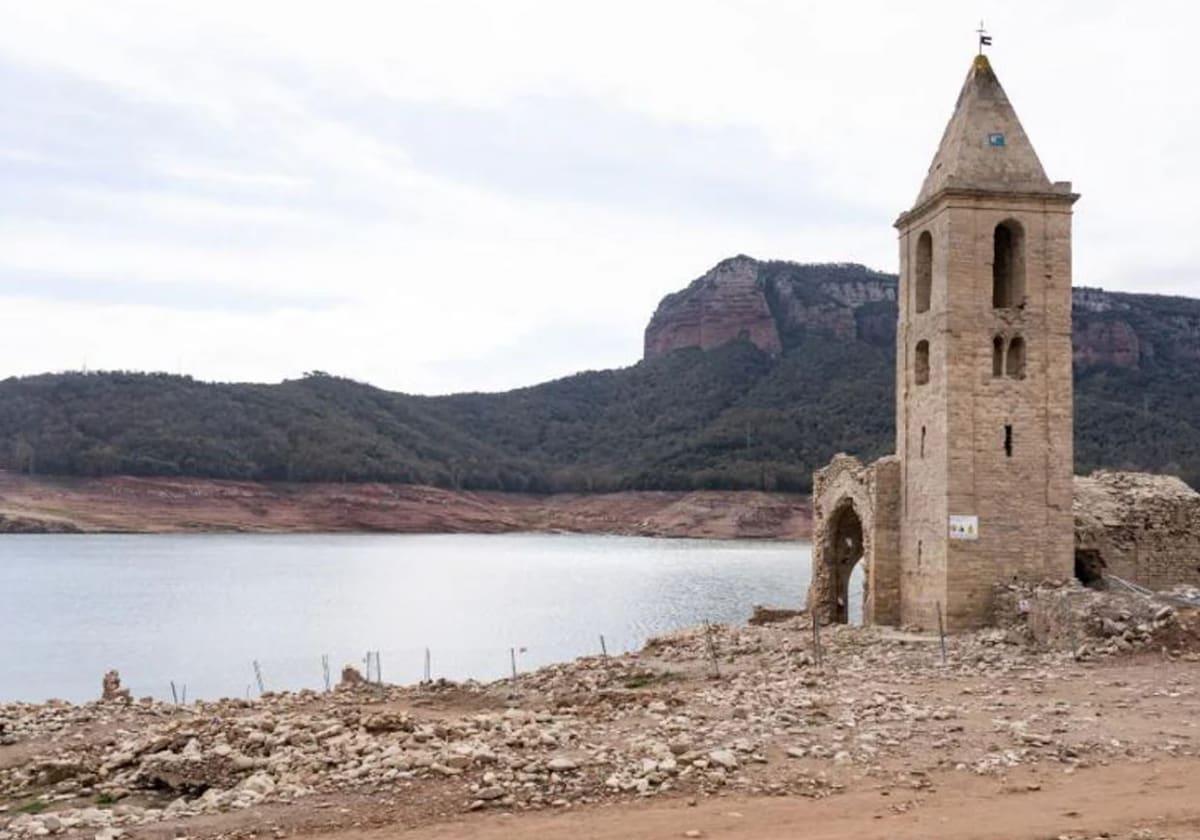

Sections
Highlight

Spain's reservoirs are heading into 2025 in better condition than they began 2024, which is not bad news considering that the situation of long-term drought (when less rainfall than normal falls over three consecutive years) still persists in Catalonia, parts of the Cantabrian coast (Asturias, Cantabria and Álava), the southeast of the country and both island groups.
The nation's total water reserves start the year with 28,973 million cubic metres (137 hm3 more than last week of 2024, up by 0.2%), equivalent to 51.7% of its capacity, according to data published on Thursday by the Ministry for Ecological Transition and the Demographic Challenge (Miteco). Of this total, the reservoirs on the Atlantic side accumulated 20,850 million cubic metres (72% of the total) and those on the Mediterranean side, over 8,123 million m3 (28%).
Compared to their situation a year ago when they were at 46% of their capacity, the reservoirs are 5.6 points higher and now hold 3,142 million cubic metres more than at the beginning of January 2024, an amount slightly higher than national, annual, domestic consumption.
670mm Slightly wetter than a normal year
In terms of rainfall in 2024, 670 litres per square metre have been collected on mainland Spain as a whole, according to provisional data provided by Aemet (Spain's national meteorological agency), with last week's rainfall still to be recorded. This is 5% above normal. It was the first wet year since 2018. During 2024 there have been four months classed as 'very dry': April, July, November and December; one 'dry' month: May; four 'wet' months: January, February, August and September; two 'very wet¡ months: March and June. Then there was the month of October with two 'Dana' weather events, which was 'extremely wet' - in fact, the wettest month since records began. The average was 147 litres, 189% of the average value for this month.
The current level of Spain's reservoirs is also higher (six tenths above) than the average for the last ten years, another encouraging figure considering that a year ago they were at 46%, almost eight points below the average for the decade.
Compared to their January 2024 records, the drainage basins that usually suffer more water problems (those in the south and Catalonia) also present better levels. This is the case with the Guadalquivir and Guadiana river basins (15 points higher respectively), the Andalusian Mediterranean basin (10 points higher), Guadalete Barbate (14 points higher), Júcar and Segura (three points higher apiece) and the inland Catalan basin (17 points higher).
The water reserves at these locations increased thanks to the heavy rains in March (it rained twice as much as normal) and May, and again the rainfall recorded during the autumn, especially in October, the month of the Dana storms. This shift in water levels really stands out when looking at the Sau reservoir in Barcelona because in March 2024 it was at 1% of its capacity and then, only three months later in June, it reached over 40%. Today it is at 16%, a percentage that is still very low, but nothing like it was at that real low point during the drought.
A similar situation is occurring for the reservoirs along the Segura river basin, which are somewhat better than a year ago although still in a critical situation at 21% of their capacity. This is the worst on record of all the mainland's drainage basins. In fact, the 'Comisión de Desembalse' (the state authority that permits water reñease from reservoirs for other uses) has decided to maintain irrigation restrictions in this area at least until March 2025 after noting that the recovery of reserves (25 million m3 more in a year) is still insufficient.
For the rest, the situation of the national water reserves is as follows: above 50% of their capacity are the Eastern Cantabrian reserves at 86.3%; the Western Cantabrian at 65.5%; the Miño-Sil at 55.7%; Galicia Costa at 80.8%; the inland river basins of the Basque Country at 95.2%; the Duero at 63.6%; the Tagus at 54%; the Tinto, Odiel and Piedras at 82.5% and the Ebro at 75.5%.
Below 50% are the Guadiana at 41.2%; Guadalete-Barbate at 28.2%; Guadalquivir at 35.1%; the Andalusian Mediterranean Basin at 29.2%; the Júcar at 49.8%; Catalonia's inland river basins at 33.4% and the Segura at 21.3%.
The reservoirs in all the provinces of Spain are above 20% with the exception of Almeria, whose reservoirs barely exceed 9% of their capacity. The next lowest provinces are Albacete (20.3%), Alicante (21%) and Murcia (21.6%).
For Professor Jorge Olcina, director of the Climatology Laboratory at the University of Alicante, the general perspective of starting 2025 with better reserves than last year is positive news, but he warns of the continuing issue with the basins in the southeast of Spain, especially those of the Segura and the Andalusian Mediterranean, the only two that are below 30% of their capacity, together with the Guadalete-Barbate, which supplies a much smaller population. "These are worrying percentages and we must not lower our guard in relation to the drought plans. In this southeast quadrant the water reserves are not good." Prof Olcina also pointed out that, according to Aemet forecasts, it does not look like this winter is going to be a very rainy one.
Publicidad
Publicidad
Publicidad
Publicidad
Esta funcionalidad es exclusiva para registrados.
Reporta un error en esta noticia

Debido a un error no hemos podido dar de alta tu suscripción.
Por favor, ponte en contacto con Atención al Cliente.

¡Bienvenido a SURINENGLISH!

Tu suscripción con Google se ha realizado correctamente, pero ya tenías otra suscripción activa en SURINENGLISH.
Déjanos tus datos y nos pondremos en contacto contigo para analizar tu caso

¡Tu suscripción con Google se ha realizado correctamente!
La compra se ha asociado al siguiente email
Comentar es una ventaja exclusiva para registrados
¿Ya eres registrado?
Inicia sesiónNecesitas ser suscriptor para poder votar.